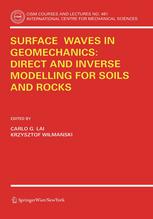

Most ebook files are in PDF format, so you can easily read them using various software such as Foxit Reader or directly on the Google Chrome browser.
Some ebook files are released by publishers in other formats such as .awz, .mobi, .epub, .fb2, etc. You may need to install specific software to read these formats on mobile/PC, such as Calibre.
Please read the tutorial at this link: https://ebookbell.com/faq
We offer FREE conversion to the popular formats you request; however, this may take some time. Therefore, right after payment, please email us, and we will try to provide the service as quickly as possible.
For some exceptional file formats or broken links (if any), please refrain from opening any disputes. Instead, email us first, and we will try to assist within a maximum of 6 hours.
EbookBell Team

0.0
0 reviewsTheories of surface waves develop since the end of XIX century and many fundamental problems like existence, phase and group velocities, attenuation (quality factor), mode conversion, etc. have been, in part successfully, solved within the framework of such simple models as ideal fluids^ or linear elasticity. However, a sufficiently complete presentation of this subject, particularly for solids, is still missing in the literature. The sole exception is the book of I. A. Viktorov^ which contains an extensive discussion of fundamental properties of surface waves in homogeneous and stratified linear elastic solids with particular emphasis on contributions of Russian scientists. Unfortunately, the book has never been translated to English and its Russian version is also hardly available. Practical applications of surface waves develop intensively since a much shorter period of time than theories even though the motivation of discoverers of surface waves such as Lord Rayleigh stems from their appearance in geophysics and seismology. Nowadays the growing interest in practical applications of surface waves stem from the following two main factors: surface waves are ideal for developing relatively cheap and convenient methods of nondestructive testing of various systems spanning from nanomaterials (e.g.